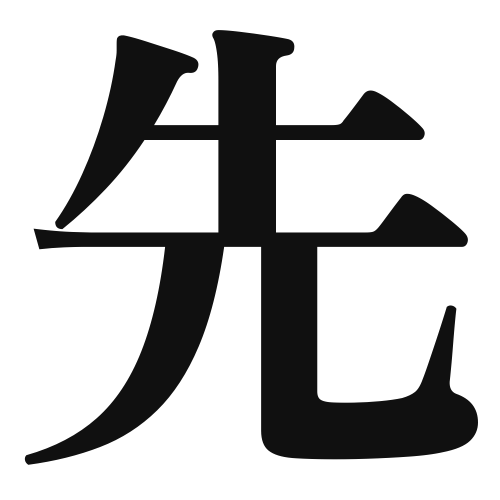1. Overview of Meaning
The kanji “先” (sen) primarily means “before,” “ahead,” or “previous.” It is often used to indicate something that comes first in time or space.
2. Formation and Radical
Formation of the Kanji: The kanji “先” is a phono-semantic compound, which means it combines both a phonetic and a semantic component. The left part, “刀” (katana), suggests a meaning related to cutting or sharpness, while the right part, “先” (sen), indicates the concept of “before” or “ahead.”
Radical: The radical for “先” is “刀” (katana), which is associated with cutting or sharp objects.
3. Examples of Usage
Common Words and Phrases: Some frequently used words that include “先” are:
- 先輩 (senpai) – senior or mentor
- 先週 (senshuu) – last week
- 先に (saki ni) – beforehand or in advance
Example Sentences in Daily Conversation:
- 彼は私の先輩です。 (Kare wa watashi no senpai desu.) – He is my senior.
- 先週、旅行に行きました。 (Senshuu, ryokou ni ikimashita.) – I went on a trip last week.
4. Synonyms and Antonyms
Similar Kanji: A similar kanji is “前” (zen), which also means “before” but is more commonly used to refer to the front or the earlier part of something.
Antonyms: The antonym of “先” is “後” (ato), which means “after” or “later.”
5. Cultural and Historical Background
Relation to Japanese Culture: The concept of “先” is significant in Japanese culture, especially in social hierarchies where respect for seniors (先輩) is emphasized.
Proverbs and Idioms: One common saying is “先んずれば人を制す” (Sakinaru ba hito o seisu), which translates to “He who acts first controls the situation,” highlighting the importance of being proactive.
